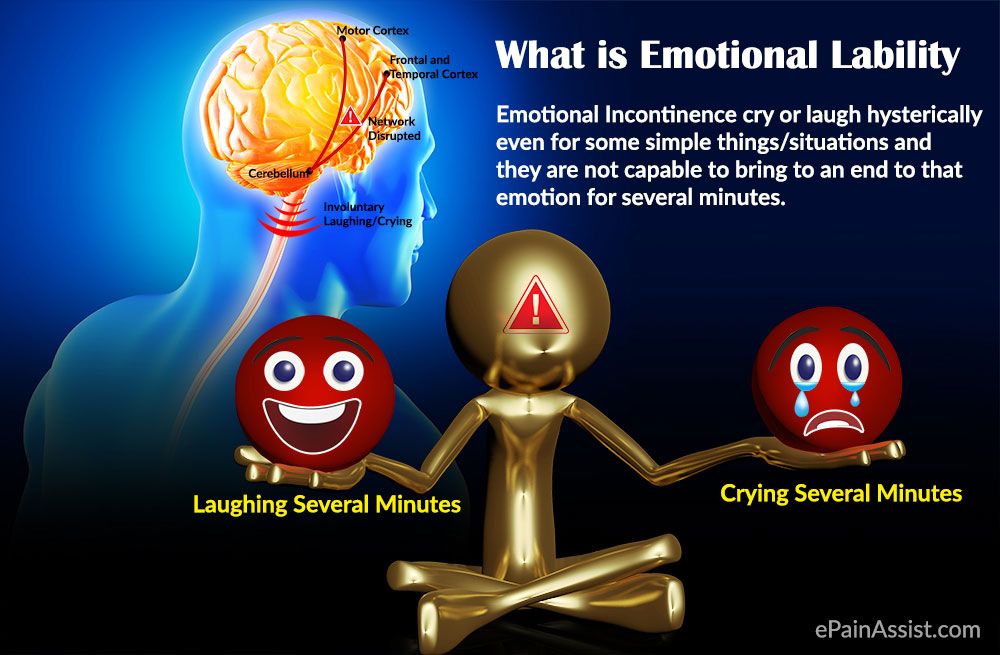Emotional lability, also known as emotional instability, is a condition that occurs when a person has very rapid changes in mood or has disproportionate emotions to a certain situation or environment, with uncontrollable crying or laughing. This condition also manifests itself through other symptoms such as outbursts of anger, episodes of extreme sadness and detachment from other people.
Most of the time, emotional lability is caused by genetic alterations, negative experiences in childhood or brain damage caused by head trauma or other diseases such as Alzheimer’s, and it can also be associated with some mental disorders such as pseudobulbar affection, bipolar disorder, syndrome. Borderline and cyclothymia.
The treatment of emotional lability can be done with antidepressant medication recommended by the psychiatrist, psychotherapy and natural measures such as physical activity, meditation through relaxation techniques and breathing.
Main symptoms
The symptoms of emotional lability depend on the severity of the condition and it is different from one person to another, and can be:
- Sudden mood swings;
- Outburst of anger for no apparent reason;
- Uncontrollable crying or laughing at inappropriate times;
- Excessive sadness that appears suddenly and without explanation;
- Exaggerated attachment or detachment to other people.
In some cases, emotional lability is related to symptoms of depression, anxiety and even eating disorders such as binge eating, anorexia and bulimia nervosa. Learn more about bulimia nervosa and other symptoms.
Possible causes
The causes of emotional lability may be related to genetic influences transmitted from parent to child, traumatizing experiences experienced in childhood, and some people are more likely to have this type of change, such as women aged between 16 and 24 years.
This change is often caused by psychological problems that make it difficult to control emotions and reactions, such as:
- Disorder of Involuntary Emotional Expression or Pseudobulbar Affect: it consists of an affect disorder, characterized by difficulty in controlling emotions and manifests with uncontrollable laughter or crying;
- Cyclothymia: it is a psychological condition in which the person varies between a state of euphoria and depression;
- Borderline Syndrome: it is characterized by sudden mood swings and excessive fear of being abandoned by others;
- Bipolar disorder: it is identified through the alternation of mood, between the depressive and manic phase, which is extreme euphoria;
- Attention Deficit Hyperactivity Disorder (ADHD): more common in children, it is a type of disorder that leads to excessive distraction and impulsiveness;
- Autism Spectrum Disorder (ASD): it is a syndrome that causes changes in behavior and problems in communication and socialization.
Some brain injuries caused by head trauma, skull fracture and diseases such as Alzheimer’s, multiple sclerosis and frontotemporal dementia can also trigger symptoms of emotional lability. Check out what it is and the main signs and symptoms of frontotemporal dementia.
In addition, some everyday situations can lead to the emergence of symptoms of emotional lability, known as triggers. Some triggers can be excessive tiredness, anxiety, stress, job loss, death of a family member, conflicted relationships, and very noisy places
How is the treatment done
Treatment for emotional lability should be indicated by a psychiatrist, depending on the severity of the symptoms and whether the person has an associated psychological disorder or problem. Generally, a doctor recommends using medications such as antidepressants to regulate the brain hormones responsible for emotions.
Some natural measures can also help in the treatment of emotional lability, such as exercising, developing distraction and leisure activities, participating in meditation sessions with breathing and relaxation techniques, and following up with a psychologist, through psychotherapy. See more what psychotherapy is and what it is for.
It is important to consult a psychiatrist and start treatment as soon as symptoms appear because, often, the symptoms of this change affect the performance of daily activities such as working, studying, going to the movies or theatre, for example.
